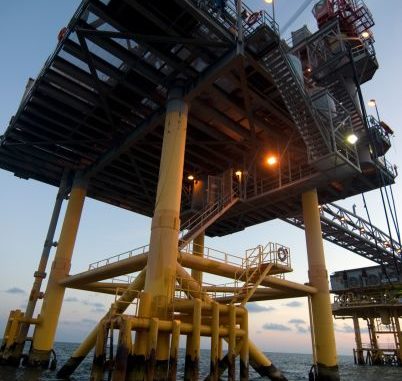
Rig decommissioning mandated by federal Idle Iron policy is destroying marine habitat, opponents say.
When oil and gas rigs were erected in the Gulf of Mexico, they were there for one reason and one reason alone — to tap into the fertile floor of the Gulf and extract fossil fuels for a rapidly growing (and mobile) America. Some 70 years later, not much has changed in that regard.
But something else, something quite unique and quite probably unexpected, happened when the rigs began popping up like mushrooms after a rainstorm. The area around the legs of the rigs and platforms became underwater population hubs — veritable boomtowns of some of the most diverse marine habitat on Earth.
Baitfish and sportfish are there. So are multi-colored corals and much larger predators. Together, they create a magnificent biomass in a world that loses habitat for animal life on a daily basis. That much is known.
Another fact is that the same rigs that have become magnets for aquatic life are being erased from the Gulf of Mexico at an increasing rate. This year alone, it has been reported that 359 decommissioned rigs and platforms are scheduled for removal in the Gulf. And while there is some speculation that the figure may be a bit high, it is widely agreed that the removal of even one rig is detrimental to reef fish habitat.
The rig-removal policy is known as “Idle Iron,” and it was issued by the federal government in the fall of 2010 after Hurricanes Katrina and Rita left a large number of Gulf rigs damaged. The Deepwater Horizon explosion and ensuing oil spill might have hastened the initiative’s focus, as well, which says that rigs must be removed by the operating party after a five-year period of inactivity.
And that’s where things have come to a head of sorts. Conservationists have their idea of what should remain, industry has theirs — and sometimes the opinions differ. Economics and liability also are large pieces of a puzzle that still is waiting to be solved.
U.S. Sen. David Vitter (R-LA) is in the process of conferring with each of the groups, and is expected to propose legislation on Capitol Hill that would make it easier for offshore structures to be used in collective Rigs to Reefs programs. The announcement is much welcomed by most outdoors and coastal advocates who see any movement to maintaining reefs as beneficial.
“Senator Vitter is still working with a comprehensive group of all stakeholders, taking in all the concerns of those who will be affected,” Vitter spokesman Luke Bolar said.
While any potential legislation remains a work in progress, there are five points the bill will include, Bolar said. They are:
Shorten permit review and approval time for rigs to be decommissioned for reefing.
Require additional consultation and coordination between the Bureau of Safety and Environmental Enforcement and state agencies to establish more reef planning areas closer to shore.
Remove BSEE’s five-mile buffer zone between sites.
Maintain the transfer of liability to the state/entity receiving the platform.
Build new reef sites and expand upon already-established reefing sites to protect marine habitats.
The Center for Coastal Conservation is one of the organizations offering input to the senator while the bill is being crafted. CCC President Jeff Angers said he likes what he hears so far about the five points the senator’s spokesman says will be included in the bill.
“It’s a great start,” Angers said. “I think Senator Vitter recognizes that in these rigs we have these incredible vertical ecosystems. Of course, that was not their intent, but they’re there now. Operators are legally required to remove them and agreed to return the Gulf to like it was before (they started drilling.) But now, we have these habitats we don’t want to see go.
“So, anything to ease every rig possible into a rigs-to-reefs program is welcomed.”
Angers agrees with Vitter that the only way to have true success in transforming rigs to artificial reefs is to reach out to the people who currently are responsible for the old structures — the oil and gas industry.
“The recreational and commercial fishing industries have had a simpatico relationship with oil and gas for generations,” Angers said. “Were it not for the infrastructure oil and gas provides to transfer its products, we probably wouldn’t have a four-lane highway leading us down to Venice — or any other of our famous ports of call, really.
“So cooperation is key right now. We have to make sure no stakeholders are left at the table. Working together is the only thing that will get us closer to passing a bill.”
Ted Venker, national communications director for the Coastal Conservation Association, agreed that the points that appear on their way to making Vitter’s final draft of the bill are steps in the rights direction.
“These all are steps that will be a start for helping us reach our own goal, which is to leave as many of these rigs out there as possible,” Venker said. “There are a million considerations, and some are harder than others. We’d like to see something about reefing in place in there, but that may still be part of what’s being discussed.
“At this point, I wouldn’t have any critiques. It’s a good start.”
Angers said he’d like to see included in the bill a deadline for Rigs to Reefs money to be used.
“Whenever money sits in an account, it gets pilfered,” he said. “It happens everywhere, all 50 states. The money is going to be used. We asked them to include a (two-year) deadline by when the funds need to be (spent or obligated.)”
Whether that detail is included or not, Angers is excited about the possibility this pending legislation offers.
“It’s going to be an exciting time,” he said. “I think it’s only going to get better.”
